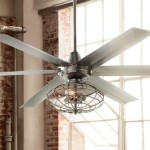How To Make A Small Worm Farm For Fishing
Establishing a small worm farm dedicated to fishing can be an advantageous endeavor, providing a convenient and economical supply of live bait. To ensure the success and effectiveness of your worm farm, it is imperative to consider the fundamental aspects involved in its creation and maintenance.
This article will delve into the essential considerations for establishing a small worm farm for fishing, guiding you through the necessary steps and providing valuable insights to optimize the health and productivity of your worm population.
1. Selecting The Appropriate Worms
The foundation of a successful worm farm lies in choosing the right species of worms. Red wigglers (Eisenia fetida) are widely regarded as the ideal choice for fishing bait due to their prolificacy, hardiness, and suitability for various fishing applications.
2. Housing Your Worms
Provide your worms with a comfortable and suitable living environment by selecting an appropriate container as their habitat. Plastic storage bins with drainage holes or dedicated worm bins are commonly used, offering ample space and ventilation.
3. Preparing The Bedding
The bedding material serves as the home and habitat for your worms, supporting their movement, feeding, and reproduction. Opt for organic materials such as shredded newspaper, cardboard, or composted leaves, which provide moisture and nutrients.
4. Maintaining Moisture Levels
Worms thrive in moist environments, but excess moisture can lead to drowning or attract pests. Maintain optimal moisture levels by occasionally misting the bedding with water or feeding moist scraps. Avoid overwatering to prevent anaerobic conditions.
5. Aeration And Ventilation
Adequate aeration is crucial for worm survival, as they require oxygen to breathe. Ensure proper ventilation by providing air holes in the lid of your worm bin or regularly aerating the bedding with a fork or aerator.
6. Feeding Your Worms
Worms are voracious eaters and require a balanced diet. Feed them a variety of organic materials, such as vegetable scraps, fruit peels, and coffee grounds. Avoid feeding them meat, dairy products, or processed foods.
7. Harvesting Your Worms
Once your worm farm is established, you can harvest worms for fishing bait as needed. Gently separate the worms from the bedding by hand or sift them through a mesh screen. Avoid over-harvesting, as it can disrupt the worm population's balance.
By following these essential aspects, you can successfully establish a small worm farm for fishing, ensuring a reliable and convenient supply of live bait for your angling expeditions.

How To Grow Your Own Fishing Worms 11 Steps With Pictures

A Worm Farm For Fishing To Breed Your Own Bait Worms

How To Grow Your Own Fishing Worms 11 Steps With Pictures

Redworm Farming Backwoods Home

How To Grow Your Own Fishing Worms 11 Steps With Pictures

Diy Worm Composting Bin How To Do It Right Uncle Jims Farm

How To Build A Worm Farm Modern Farmer

How To Build A Worm Bed Start Small Farm Scout Life

How To Make Our Diy Worm Bin Growingagreenerworld Com

Composting Using A Wormeryirish Peatland Conservation Council








